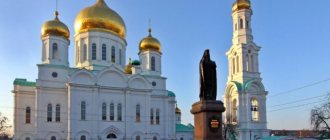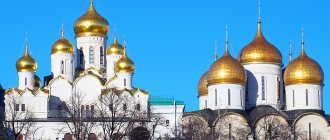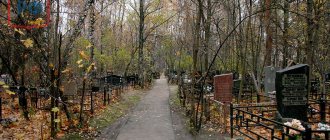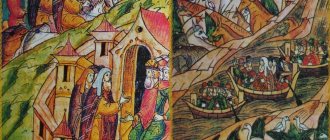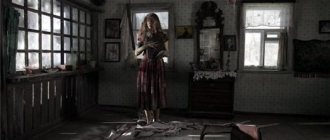For some people, serving God is the main goal in life. They are happy to give their all in order to achieve deep spirituality. It is these people who most often ask the question: “How to become a priest?” Indeed, thanks to this profession, a person can not only get closer to the Almighty, but also help others see his light.
So, let's take a closer look at how one becomes a priest. What skills are needed for this? Who can apply for this rank? And why do only a few remain faithful to God until the end of their lives?
Short story
Orthodoxy is the third most supported branch of Christianity (after Catholicism and Protestantism); it is professed by over 225 million people around the world. Since apostolic times there has been a single church, but in 1054 the Great Schism occurred, and the believers were divided into Catholics and Orthodox.
Subsequently, Christianity has seen different times, for example, in the USSR atheism was aggressively promoted and clergy often had to conduct rituals secretly so that the authorities would not find out about it.
Thus, in the 30s of the 20th century, all seminaries were closed; easing occurred only during the Second World War, when the country's leadership was forced to recognize the need for human faith in God.
Description of the profession
According to established tradition, the priesthood consists of three levels:
- Bishop. This is the highest level, which includes bishops, archbishops, metropolitans and patriarchs. They are appointed by decisions of the Holy Synod, head dioceses and carry out work aimed at enhancing church activities. Only bishops have access to the sacrament of the priesthood*; they can ordain presbyters.
- Priest (presbyter). The second degree in the hierarchy, these ministers can perform six sacraments (excluding ordination). They are required to undergo training in a seminary or theological academy, reach the age of Christ (i.e., thirty years old) and have no defects that prevent them from fulfilling their duties. In the Russian tradition, a presbyter is usually addressed as “father.”
- Deacon (deacon). The lowest level in Christianity, whose representatives do not have the right to perform divine services and sacraments, but can provide assistance to bishops and elders. Their presence is optional, so not all churches have them.
*Christian teaching assumes the presence of seven sacraments:
- baptism;
- anointing;
- Eucharist (communion);
- confession (repentance);
- wedding (marriage);
- unction (unction);
- priesthood.
The clergy is divided into black and white. Blacks include monks and bishops; deacons and priests can be monastics or be white (married) provided they enter into a single marriage before ordination.
Preliminary preparation
For those who are thinking about how to become an Orthodox priest, there is a little advice: start preparing to enter the seminary several years before the target date. This must be done for the following reasons.
As stated earlier, all applicants are required to have a letter of recommendation. No self-respecting priest would give such a document to the first person he met. You should be prepared to have to prove the strength of your faith. To do this, it is necessary to work for the benefit of the church, unquestioningly following all the instructions of the parish pastor.
Besides, how to become a priest without having the necessary knowledge? Naturally, you will learn a lot in seminary. But a person himself must reach out to the light of knowledge. First you need to read the Old and New Testaments, as well as become familiar with the history of the Orthodox world. After all, this is the minimum without which not a single Orthodox person can exist.
What specialties are best to study in?
The system of Orthodox education in Russia is branched and has a number of levels:
- extracurricular activities (family, literature, church kindergartens, radio and television, visiting churches);
- primary (Sunday schools, clubs, public services, pilgrimages, religious processions);
- secondary (theological schools, gymnasiums, colleges, lyceums, pastoral or theological courses at universities).
You can study to become a priest at higher religious institutions: seminaries (bachelor's qualification), academies and universities (master's and postgraduate students). In modern theological seminaries, future priests are trained in the following main areas:
- training of ministers and religious personnel of the Orthodox faith;
- theology.
The requirements for seminary applicants differ from the standard criteria that applicants to regular universities must meet. Only baptized Orthodox men between the ages of 18 and 35 who have a high school diploma or college (university) diploma and are members of the church are accepted into theological higher education institutions. They must be single or first married.
To the standard set of documents (application, passport, certificate or diploma, military ID, insurance policy), recommendations of local priests certified by bishops are added. Applicants can provide Unified State Examination results in Russian language and social studies or write a summary and take testing in these subjects directly at the educational institution. In addition, you will have to pass a test according to the Law of God and undergo an oral interview. Sometimes an exam is held in the Church Slavonic language and church singing. Students are accepted for distance learning without exams and without age restrictions on the recommendation of the diocesan bishop.
The duration of study at the seminary is 4 years; in some institutions, students are accepted into the first year only after completing a one-year preparatory program. Master's programs last for 2 years, after which they write a master's thesis. Postgraduate students study for 3 years in theological academies and receive a candidate's degree after defending their scientific work.
I was a Kenyan boy
Priest Philip Gathari , Nyeri, Kenya
The words “Orthodox” and “Orthodoxy” came into my life as a child. We were familiar with all the Christian denominations operating in Kenya, the main one of which was Catholicism. But he didn't attract me.
Then the Independent Church appeared, supported by fighters for political freedoms in Kenya. Orthodoxy came with them. White missionaries from Greece attracted us children to the Orthodox faith.
We began to flock to services at the local temple. What struck us most was the style of reading psalms and other liturgical readings. We were fascinated by Communion. And we also liked the bread prosphoras that were brought out from the altar. Bread was rare, and going to church was a sure way to taste it. As children, we did not understand the meaning of all these rituals. But they didn’t like to miss services. Every time the priest went away somewhere, we felt very bad.
I began singing in a youth choir, and later became an altar boy. This was considered an honor, because when the priest was away, the altar servers were given the privilege of helping to serve Matins. Most of the older parishioners could not read, so we young people were their eyes and their mouths.
I received my primary education when I was already fully living the church life. I remember once praying: “Lord, when I grow up, make me a priest, like our local priest.” As a child, I really liked the vestments of priests. They fascinated me. I was also attracted by the central role priests play in the life of our Christian community.
By the time I entered high school in Nairobi, I had already been baptized with the name Philip, which was the name of the independent preacher who brought Orthodoxy to Kenya.
After finishing school, when I was already working as a secretary in the reception office of the Ministry of Internal Affairs, the priest of the local rural church sent me to study abroad, to the university in Sibiu (Romania). I had no intention of studying theology specifically, but it turned out that way.
In 1983 I returned to my country. My wanderings began: for 15 years I worked as a teacher in different schools and taught at a seminary. When I lost my last place, I couldn’t find a job with my theological diploma. To support myself, I was engaged in private business for two years.
And then I was called to serve by Bishop Seraphim, Archbishop of Nairobi. He felt that I could become a priest: as a lay theologian, I made a great contribution to the training of priests at the seminary; most of our parishioners and priests relied and trusted me greatly. I have always really wanted to help my people learn and understand Orthodoxy. After all, most of our local priests do not have higher education, and some liturgical books were translated incorrectly. Our flock simply did not see these mistakes... Since I studied to be a theologian, I felt that my duty was to serve the Orthodox Church...
In 1999, immediately after my ordination, the bishop sent me to an area where there was no Orthodox community. There I founded a church in the name of St. Philip in Karundu.
And in 2005, the new archbishop, Bishop Macarius (Andrea Tirides), with whom I taught at the seminary, sent me to the Church of St. Anthony in Ichamar. Where I serve today. There are a lot of difficulties; we have to sacrifice our personal comfort, our resources in order to keep the missionary school that we created at the temple afloat. This is an extremely difficult task. But we overcome everything.
Priest Thomas DIC
Best Universities to Study
The structure of the Russian Orthodox Church (ROC) operates 55 seminaries located in Russia, Ukraine, Belarus, Moldova, Latvia, Uzbekistan and Kazakhstan. Seminarians also study in the USA and France.
The largest religious educational institutions include:
- St. Petersburg Theological Seminary. It was founded back in 1721 on the orders of Peter I. It was closed in 1918, and its work was resumed only in 1946. Graduates of this institution were many famous people, such as the writer Nikolai Pomyalovsky, statesman Mikhail Speransky, academician of the Russian Academy of Sciences Nikolai Nikolsky.
- Vladimir St. Theophan's Theological Seminary. Trains ministers of religious organizations. It was created in 1750 by decree of Empress Elizabeth Petrovna and is one of the oldest educational institutions of the Russian Orthodox Church. After an 80-year period of inactivity, it was re-established in 1998. It has two departments: theology and biblical studies, as well as church-historical and church-practical disciplines.
- Smolensk Orthodox Theological Seminary. In operation since 1728 (with a break of 70 years in 1918–1988). Clergymen and theologians emerge from its walls. Seminarians have the opportunity to take the course full-time or part-time. All the necessary infrastructure is available: an educational building, a library, a temple, a catering facility and a gym.
- Moscow Theological Academy. Conducts undergraduate, graduate and postgraduate studies. Its structure includes a regency and icon painting department. This educational institution produces not only priests, but also teachers from church universities, as well as scientists - theologians and theologians. Bachelors can continue their studies in master's programs in 7 profiles.
You can also receive spiritual education at Orthodox universities:
- Orthodox St. Tikhon's University for the Humanities (Moscow) teaches theology and religious studies at the theological faculty. In addition, among additional educational profiles there is teaching of the Church Slavonic language, church painting, social work, etc. International activities have been developed within the framework of a number of programs, such as Erasmus+, internships take place in Milan (Italy), Nottingham (UK), La Roche-sur -Yon (France).
- Moscow Orthodox University of St. John the Theologian provides education in three faculties: religious studies, social sciences and humanities, and psychology. Doctrinal and theological subjects at the university are taught by graduates of the Moscow Theological Academy. Research activities at the university are at a high level: there is a scientific school of Christian psychology, scientific journals “Historical Education”, “Orthodox Education”, “Eurasia: Spiritual Traditions of Nations” are published, and international cooperation has been established.
Theologians for cultural, educational, spiritual, and pedagogical activities are also trained in some secular universities, for example, at Pskov State University, Far Eastern Federal University, and Kazan (Volga Region) Federal University.
I was a physics student
Archpriest Maxim Pervozvansky, Moscow
While studying in my fifth year at the Faculty of Experimental Physics at MEPhI, I seriously, truly believed in God. I began to look for opportunities to serve Him in the church fence - no matter who, but in the church fence. After graduating from high school, I went to work at one of the closed design institutes and at the same time began going to the Novospassky Monastery. Archimandrite Alexy (Frolov) suggested that I create and head a parochial school at the monastery.
And at the same time, I asked to read at the service, became an altar boy and a reader. Since at that time there were only three monks, one protodeacon and several novices in Novospassky, my help was in demand. I went to services every day, morning and evening, read...
And after a few years, apparently observing my work and drawing some conclusions for himself, the bishop offered to ordain me.
I loved physics. But the decision to leave work was made quite easily. The country was going through hard times. I did not see the possibility of making efforts in the field that occupied me - military physics. There has been a loss of meaning. And it coincided with a serious internal turn to God, with a search for service.
In 1994 I became a deacon and then a priest. I never aspired to this myself. It seemed to me that priests were some special kind of people, that they were unearthly, angels. The especially high example of the monastery priests convinced me of this - such an ideal seemed unattainable. But there are words in the Bible: You did not choose Me, but I chose you - I always remembered these lines and perceived them as addressed to myself personally.
The priesthood became for me the assembly point of my entire life. From him and through him, my family and professional life, my work as the editor-in-chief of a magazine, and my work with youth are built. Priestly ministry gives meaning to everything I do.
Priest Philip GATARI
Responsibilities at work
The main task of the priest is to conduct religious rituals, which can be:
- general, held in the temple for everyone. Nowadays they are limited to two or three services a day (matins, vespers, liturgy), although the daily circle can include up to 9 services. Sometimes the priest serves prayers and memorial services;
- private. In this case, the parishioner turns to the presbyter to carry out the required requirement. Usually this is baptism, communion, consecration of a home or car. Burial, prayer or wedding ceremonies are also often ordered.
In addition to the main ones, the clergyman performs a number of other functions. He confesses those who wish, gives them communion, and explains church teachings during public conversations. To increase the authority of the faith and attract new parishioners, he carries out a lot of educational work in the form of meetings with people, organizing the activities of a church choir, Sunday school, supporting pilgrimages and religious processions.
To attract young people and keep up with current trends, many publish Christian newspapers and maintain Christian websites or blogs. Mass events are also organized (exhibitions, meetings, hikes, competitions) and active social work is carried out aimed at helping people in need. We should not forget about the priest’s economic functions: repairs, construction and putting things in order on the territory of the temple.
Important qualities
The profession of a priest is not ordinary; it should be called a ministry; it requires a special calling. Like a doctor, a priest must be connected with people not only by professional knowledge, but also by personal qualities: goodwill, openness to needs and problems. Of course, first of all, it is necessary that the priest himself has faith: trying to perform priestly functions mechanically, “not for the sake of Jesus, but for the sake of the bread” is not only dishonest, but also pointless and untenable even from a purely professional point of view. Therefore, marriage in the work of both a doctor and a priest is especially unacceptable: profanity in these ministries is more dangerous than in other professions.
Who is it suitable for?
A priest can be a deeply religious person, ready to devote his life to serving God and helping people. Rarely does anyone come to this path for mercantile motives; usually it happens at the call of the heart. An Orthodox priest is required to have the following personal qualities:
- openness and friendliness;
- integrity and honesty;
- the ability to listen to any person;
- ability to speak in public convincingly and cogently;
- erudition and emotional intelligence;
- tolerance and faith.
There are a number of physical restrictions for candidates for ordination:
- Women cannot be clergy;
- the protege must be an adult, but not older than 75 years;
- there is a list of unacceptable ailments: serious problems with hearing, vision or speech, absence of a leg, arm or fingers on the right hand, drunkenness or drug addiction, mental illness.
List of social restrictions:
- being in a second marriage or marrying a divorced woman, widow or harlot;
- adultery of the wife or personal;
- unfinished military service or holding a government position;
- pending imprisonment;
- presence of loans or debts;
- if at the time of the sacrament of consecration (ordination) the priest is not married, then he remains single for the entire duration of his ministry.
A Christian priest needs to have life wisdom, as well as the skills of a teacher and psychologist. Often you have to communicate with sick, desperate or aggressive parishioners, and for everyone you need to find the right words of support and reassurance. It is impossible to simply perform the functions of an elder; you need to really serve people with all your heart.
Parish priest or monk?
Before graduating from seminary, students must determine whether they intend to marry. This decision is very responsible, because it is no longer possible to change your marital status after initiation. So, the future minister of the church must either choose the path of a monk, who is forbidden to marry, or get married and become a parish priest. In this case, absolute monogamy is assumed not only from the man being ordained (he cannot divorce or remarry even if widowed), but also from his wife: she should not be a widow or divorced.
How much do they get
The priesthood is not a profession in the traditional sense, and therefore cult ministers do not have a fixed salary as such. However, despite the fact that the Bible says that the work of a shepherd should be free of charge, the priests still receive financial compensation. The church in Russia lives on donations from philanthropists, funds from parishioners paying for services carried out, and income from the sale of church equipment (icons, candles, crosses). Part of the money collected goes to the needs of the temple (repairs, utilities, diocesan tax, maintenance of vehicles, payment of service personnel), and from the remaining remuneration is paid to the presbyter.
In small parishes, collections are small, so priests often receive 15–25 thousand rubles a month and are forced to keep a subsidiary farm to feed themselves. In large churches in the capital and large cities, as well as in tourist centers during the high season, the earnings of ministers are much higher and can reach 150–200 thousand rubles. True, getting a place there is very difficult; connections and money are often required.
I was a Soviet schoolboy
Archpriest Alexander Avdyugin, Lugansk, Ukraine
Probably most of us who are in the priesthood, when asked: “How did you become a priest?” they will answer with a vague “The Lord brought.” But this uncertainty is only for the questioner, but for us it is absolute certainty. After all, there are no accidents a priori, and when you begin to compile a ladder of events, the steps of which you climbed to the amazing and indescribable minutes of ordination, it becomes absolutely clear that you were led to your current ministry...
Therefore, the answer is: “The Lord brought.”
You can remember these steps, but not all of them. There were those that, it would seem, were overcome without your will and were not very obligatory, but today, with the experience of the past years, it becomes clear that everything happened in unity and in a clear sequence.
My first religious experience, or rather, apologetic argument, was with my grandmother, my father’s mother.
“Bah,” I asked, “why is God evil in your kitchen and good in the living room?”
- You can’t say that! - Grandmother was angry. - Look, what are you thinking!
- Look for yourself! - I pointed to the icons.
In the kitchen, the image of the Savior was old, dark, only the eyes and forehead were visible. At night you wake up, and if the lamp has not gone out, then eyes are looking at you from the darkness. Scary.
In the hall, in the brightest corner, between the small windows, God, framed by a towel, is kind and joyful. In shiny clothes with flowers. And He was not alone there, with the Mother of God and some other saints.
The second vivid “religious experience” is connected with Easter. Or rather, with a police baton. In the ninth grade, after a literature lesson, in which our teacher told us about the Church and faith at her own risk, we decided to go to the Rostov Cathedral on Easter night.
Around the entrance to the cathedral, in a horseshoe shape, half a meter from each other, stood the cadets of the river school, and behind them, along the sidewalks and tram rails, were groups of young policemen. The cadets only let old women through. Everyone else had to explain themselves to the police, who, as a rule, sent them back behind the cordon.
Rostov Cathedral is located on the market square of the city. The center with parks and entertainment is nearby. It is clear that an impressive crowd of young people has gathered at the cordon, animatedly discussing a not so common action.
No, they didn’t talk about Easter and the Resurrection of Christ, they just quietly (loudly in those years it was not accepted, and it was scary) they discussed the fact itself: why they weren’t allowed in. And, naturally, they immediately developed plans to “break through” into the church. Why “break through” was not so important...
We came up with a grand plan. Not far from the cathedral there is a stop from which trams depart, passing through the cordon just past the temple gates. Opening the doors of a moving tram in those years was elementary, so we decided to jump out of the car just opposite the church gate and... run to the church.
And so they did. But they didn’t calculate it. The police turned out to be quicker. That’s when a baton hit me on the neck and back...
Probably, it was this baton that became the reason that I began to look for books related to Orthodoxy. It’s not just that this was the case in the Soviet years, but Rostov-on-Don is a special city; in it you could always find even what was prohibited and not encouraged. And the love of books, instilled in me by my parents since childhood, helped. Even in official publications, especially in domestic classics, one could find stories about Christ and faith.
During my student years, it became possible to read Christian publications “from abroad,” brought by our sailors, and Orthodox broadcasts from the BBC and Voice of America played their role.
Already in my mature years, I met a priest in a small Belgorod village. My peer. The owner of an amazingly diverse and rich library, for whom faith, service and passion for literature were a natural everyday thing. He couldn’t imagine his life any other way.
Our friendship had a logical conclusion. My father took me to the reviving Optina Pustyn, where I “stayed” for a whole year.
About the last steps to ordination you need to ask not me, but Father Melchizedek (Artyukhin), the current rector of the Optinsky metochion in Yasenevo. He taught, he blessed and wrote a recommendation for ordination. To my question why he took me under his, then dean’s, wing in Optina and assigned me to obedience in the publishing department, Father Melchizedek answered jokingly: “Because, father, he took me in because you are Avdyugin, and I am Artyukhin.”
Just a joke, but that’s exactly how the Lord ordered it.
Archpriest Maxim PERVOZVANSKY
How to build a career
Considering that the work of a priest is a ministry, most people do not think much about their career. It is important to many that people respect them and listen to their words and advice. But still, having proven yourself to be the best, you can get a transfer to a more promising parish or a teaching job at a theological seminary. If, in addition to ordinary work, a presbyter is a monk, continues his studies, and is engaged in science, then he can eventually be ordained a bishop and become part of the church elite, but this is not an easy matter.
What happens after graduating from seminary?
Having completed their education, graduates are distributed among the parishes to which they are assigned. As the service progresses, it becomes possible to receive a new rank. The first level of the church hierarchy is the deacon. This is immediately followed by ordination. And the highest degree of priesthood is the rank of bishop. At the same time, those who want to know how to become a priest need to know one more detail.
Monks (those who choose celibacy) have more opportunities to move up in the church hierarchy. Only they have a chance to receive the rank of bishop and become a metropolitan, leading an entire diocese. In addition, the Patriarch is chosen exclusively from among the monks. If a graduate chooses the path of a married parish priest, he cannot rise above the archpriest in the position of rector.
Prospects for the profession
If a person cannot imagine himself without faith and serving God, then this profession will choose him. In modern Russia, after the collapse of the USSR, interest in Orthodoxy continues to grow, new churches are opening, and a network of theological seminaries and academies has been revived. They require literate young people with strong faith who can bring the word of God to the masses.
Author: Alexey Kuznetsov
If you still have even the slightest doubt that the profession of a priest is right for you, then we strongly recommend taking a career guidance test from Profguide . It costs mere pennies, and at the same time allows you to avoid mistakes that can go in the wrong direction and cripple your entire life. Find out more >>
About the schism, unity of faith and relations with the Russian Orthodox Church
As far as I understand, you are an Old Believer and a fellow believer. Tell me what this means?
In the 17th century, after the church schism, those who wanted to preserve the liturgical and everyday way of life became schismatics, or Old Believers, Old Believers, and Old Orthodox. There are many names.
Among the Old Believers there are also different currents. There is priestlessness, and there are those who accept the priesthood. We are fellow believers.
Edinoverie is a movement whose adherents were looking for a compromise: how to remain an Old Believer and at the same time maintain contacts with the Russian Orthodox Church. In the absence of any direct benefits, people did not want to be excommunicated from the official church branch. And because they did not shave their beards, they were baptized with two fingers and were classified as schismatics. Under Paul I, co-religionists were legalized. But until the 50s of the 19th century, co-religionists remained infringed on their rights.
The New Believers, by the way, are also not united; there are also many rumors in it. On the territory of the Russian Federation and the CIS, the Russian Orthodox Church MP prevails. But there are also catacombs who do not remember, fragments of other foreign churches that have not united with the patriarchate.
Orthodoxy is not monolithic, either old or new. And everyone has their own characteristics.
Do you have your own internal hierarchy, like the Russian Orthodox Church?
This is a very sore point. After 1905 and the “Manifesto on Tolerance,” which primarily concerned the Old Believers, it was forbidden to call the Old Believers schismatics, and the construction of churches was allowed. As a result, the dawn of the Old Believers occurred, culminating at the Councils of 1917 - 1918 with a resolution: co-religionists should be governed by their bishops. And they installed the first bishop - Simon of Okhtinsky.
The first bishop of the same faith, Hieromartyr Simon; Source: pravoslavie.ru
Until the 40s, co-religionists had their own bishops. Some are now canonized in the Russian Orthodox Church as new martyrs. But after Bishop Job returned from exile from the North and died of illness, the Synod decided: now Edinoverie churches are subordinate to local bishops. Since then, we have no hierarchy of our own and we are subordinate to the Russian Orthodox Church.
At the time of the collapse of the USSR, there were only 2 Edinoverie churches in Russia. Now we have approximately 40 parishes. The donation for organizing a new church comes from the laity themselves.
How can I understand that I ended up in a church of fellow believers, and not in a church of the Russian Orthodox Church?
Our singing is dispassionate, it sounds more strict. Some complain: “Why are you all so sad?” Our songs don't convey any feelings.
In a New Believer church, the singing is joyful or sad. This is a kind of manipulation of human emotions. It is forbidden for us to forcefully push a person.
Surely you have ever seen such exalted women: “Oh, we’ve seen such a priest!” This is not the grace of God. This is just an impression of the priest.
We don't have strong scents either. I’ll go into the forest, peel off the Christmas tree, and then burn it with cense.
What is your relationship with the Russian Orthodox Church now?
Edinoverie today is fully integrated. We do our best to seek autonomy for ourselves, but, for example, we also pay internal taxes.
There are parishes that do not pay taxes because they are simply poor.
What attracted you to the same faith? After all, you can build a career in the Russian Orthodox Church.
If a person wants to build a career or earn money, he will do it anywhere - in the Russian Orthodox Church, in Sberbank, in Gazprom. And on anything, even on manure.
There are few people in our movement and they are all ideological. We invest all our efforts and resources here, but there is no material return and cannot be.
In general, the split did not occur because of external ritual features. The root lies in the very approach to life, to worship, to submission.
For example, my parishioners can scold me for something if I mess up. But in the Russian Orthodox Church there is no such thing. Our relationship is human, not servile.
There is no artificiality here. The Old Believers suffered through suffering and persecution for their beliefs. At the trial, for example, the testimony of one New Believers was equivalent to the testimony of several Old Believers.
Did you like the interview? Read others: here is the alphabetical index - choose to your taste. And subscribe to Rabdno on telegram, Instagram and VKontakte. You will not miss new interviews, and we will be pleased.


